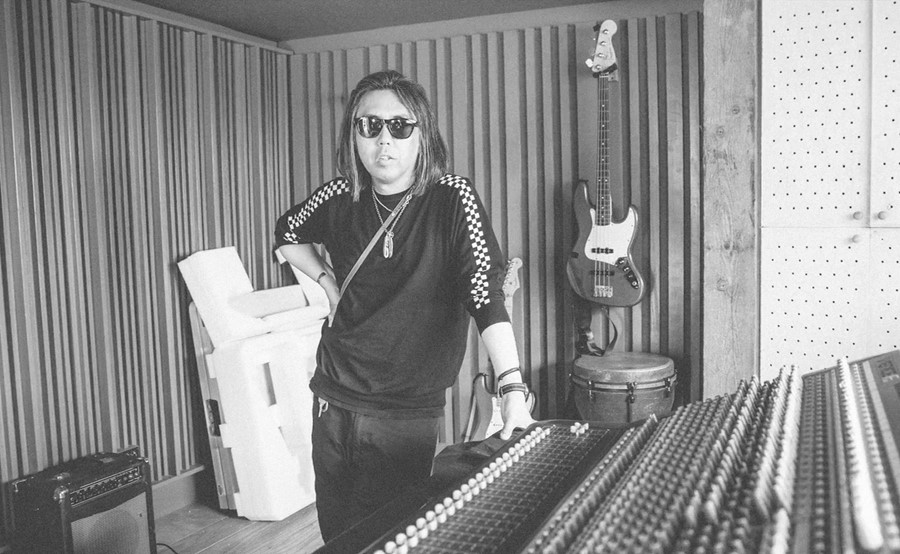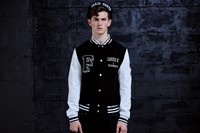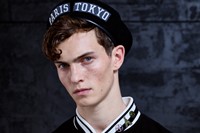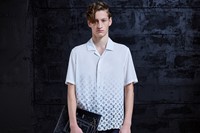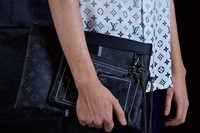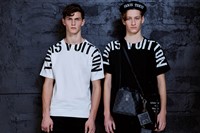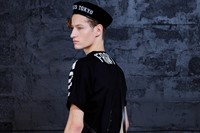As Louis Vuitton launches its collaboration with fragment design, we examine the brand’s founder Hiroshi Fujiwara, the ‘Godfather of Streetwear’
Who? “Hiroshi Fujiwara is an influencer in the truest sense of the word – he is a true icon of mine,” says Kim Jones, Louis Vuitton’s artistic director of men’s collections. High and certainly not unwarranted praise: Hiroshi Fujiwara, the founder of cult T-shirt label GOODENOUGH or ‘GDEH’ and, later, of fragment design, has an influence that is almost incalculable and is often overlooked. ‘HF’ to his friends, the designer, musician, university professor and artist is known by many as the ‘Godfather of Harajuku’ or the ‘Godfather of Streetwear’ – titles that do much to communicate the impact the Japanese designer has had on style over the last three decades – and now he has collaborared with Jones on a special Louis Vuitton capsule collection that unites his aesthetic with that of the luxury French house.
Born in the 1960s in the city of Ise, Japan, Fujiwara moved to Tokyo when he was 18 and, several years later, travelled to New York which was in the midst of the golden age of hip hop. This was the time of LL Cool J, Run–D.M.C., Public Enemy, the Beastie Boys – artists who were experimental, sampling from old records and crafting a new and radical sound that remains popular to this day. As well as hip-hop, Fujiwara encountered skate culture via Tony Hawk and other members of the legendary Bones Brigade skateboarding team. He also travelled to London where he spent time with Malcolm McLaren and Vivienne Westwood, and became obsessed with punk. (Incidentally, he later started a brand called AFFA with Jun Takahashi of Undercover that was heavily inspired by Westwood and McClaren’s work which Jones, in turn, has referenced at Louis Vuitton.)
These experiences were to have a lasting impact on Fujiwara who, upon his return to Japan, became one of the country’s first freelance DJs (specialising in remixing). He also began wearing Western streetwear labels like Stüssy (he was actually a member of the International Stüssy Tribe or ‘IST’), and, in the late 1980s, started his own brand GOODENOUGH. GDEH succeeded in bringing a certain high-end sensibility to streetwear and resonated with the then-emerging subculture of Ura-Harajuku – a subculture that was defined by dressing up (in high-end brands) instead of dressing down, like most expressions of youth rebellion in the West.
As well as leaving an indelible impact on Japanese street style, he gave basic forms of clothing – such as T-shirts, sweatshirts and trainers – something radical: currency. He also pioneered the idea of releasing clothes in small, limited-edition numbers, which has become the underlying principle behind the success (and mile-long queues) of Supreme and, more recently, Palace. On top of that, Fujiwara helped fellow Japanese designers and now streetwear titans in their own right, Jun Takahashi and Nigo of Bathing Ape or ‘BAPE’, at the very nascent stages of their respective careers.
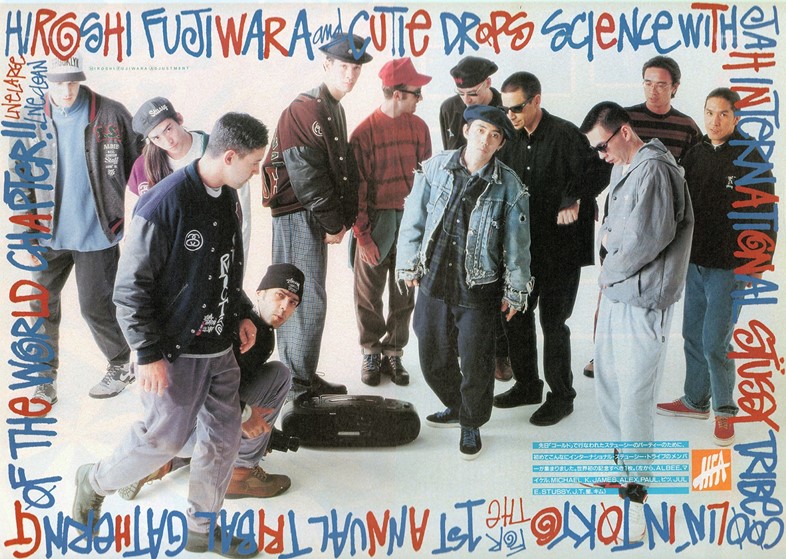
What? fragment design is a more recent addition to Fujiwara’s empire, and one that has been met with resounding acclaim. And while he’s collaborated with some of the biggest labels in existence – think Beats by Dre, Nike, Starbucks and now Louis Vuitton – fragment doesn’t feel like a commercial enterprise. Go on the label’s website, for example, and instead of an e-commerce site, you’ll be met with a glitchy video which leads on artwork by Fujiwara – pieces with titles like “Capitalism Brought By Communism” and “This Machine Kills Fascists”. That said, the clothes and shoes he designs are, almost without fail, must-have items for streetwear enthusiasts and sneakerheads.

Why? Today sees the launch of fragment design’s collaboration with Louis Vuitton, a collection inspired by Fujiwara and Jones’ “shared passions”, which include “pop culture, graphic motifs [and] sportswear history” with additional references to the cities of Tokyo and Paris. Jones has partnered with a number of brands and creators since he took over the house’s men’s collections six years ago (from notorious Brit Art duo, the Chapman brothers, to the estate of cult designer Christopher Nemeth), and has made it clear that collaboration is a key part of his creative process. “The most modern thing to do right now is for designers to collaborate,” he said in a recent interview with AnOther.
Jones is a fan of Fujiwara, but also a long-term friend – the two met in the 1990s, when Jones was working at Gimme5, the London distribution company which owned infamous and now sadly closed streetwear store The Hideout. (It was here that the designer also met James Jebbia, and fellow streetwear legends Jun Takahashi and Nigo, who collectively had a huge impact on him.) “With this collaboration, I wanted to do something quite unexpected, something perhaps more youthful than we usually do,” Jones commented on this collaboration. “Hiroshi has that understanding of detail that comes from Japan – he knows everything.” Captured by Pieter Hugo and styled by Another Man’s fashion director Ellie Grace Cumming, the collection features varsity jackets and other sporty pieces, along with a boy scout shirt-and-short set. It also includes a teddy bear cut from Monogram canvas because, well, why not?
The Louis Vuitton x fragment design pop-up is open at Harrods in London from April 27 to May 12, 2017.
